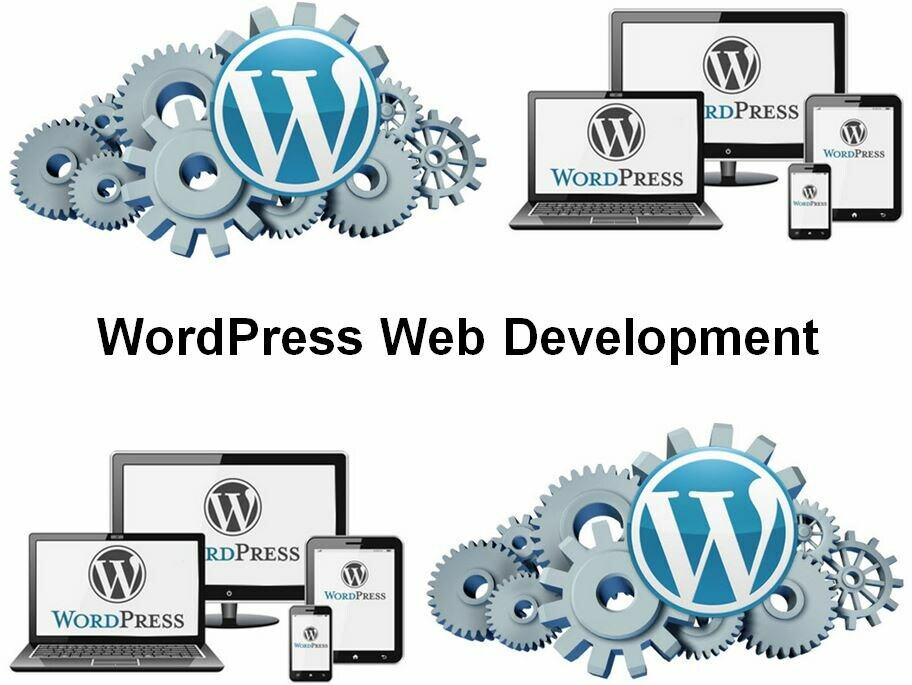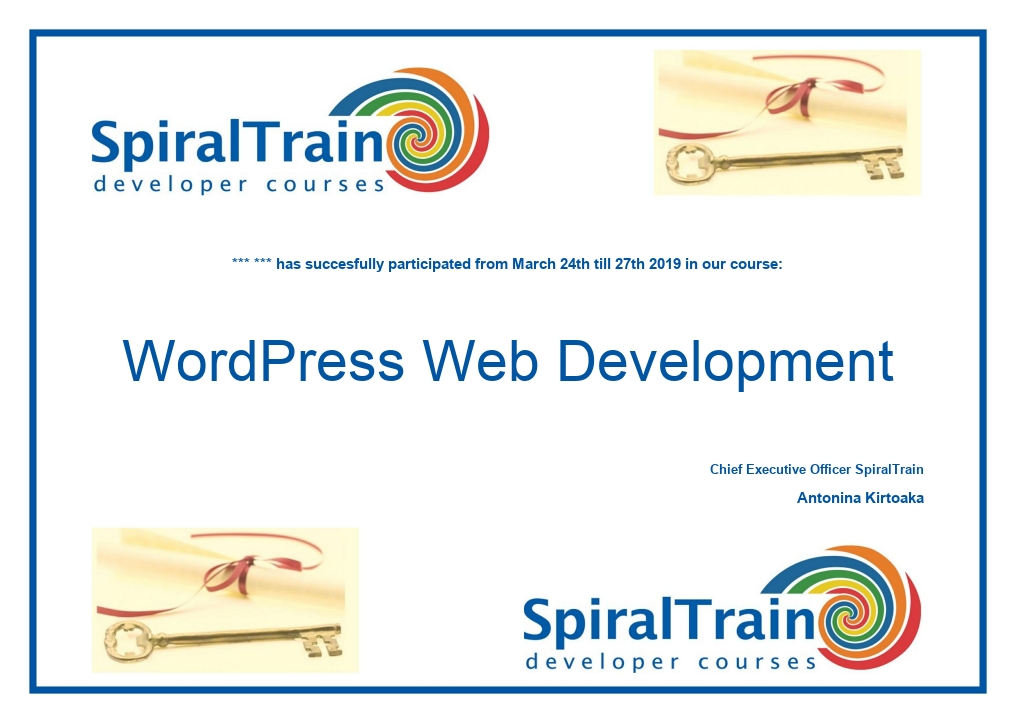-
Learning by doing
-
Trainers with practical experience
-
Classroom training
-
Detailed course material
-
Clear content description
-
Tailormade content possible
-
Training that proceeds
-
Small groups
In the course WordPress Web Development participants learn how the open source Content Management System WordPress can be used to develop different types of Web Sites.
The course starts by downloading and installing WordPress from scratch and creating a Home page.
Next the administration area called the Dashboard of the site is explored.
The different content types that can be placed in WordPress are discussed as well. The participants will learn about pages, blog items, posts, categories, products, comments, forms and other items.
The general layout and look and feel of a site is determined by its theme and participants will learn how to find, choose and install a theme.
Next attention is paid to the WordPress directory structure on the Web Server, the important configuration files there and how these files can be accessed using the File Transfer Protocol (FTP).
A WordPress installation can be given additional functionality by the use of Plugins. Numerous plugins are available on the Internet, many are free, for others you will need to buy a license.
The finding and installation of plugins is discussed and attention is paid in particular to a Theme Plugin, an IP Blocker plugin, a Multi Language plugin and a plugin for Search Engine Optimization (SEO).
This course targets persons that want to use WordPress for the design of a Web site or Web Application.
No specific knowledge is required to participate in this course. General knowledge of Web applications and experience with computers is desired.
The theory is discussed on the basis of presentation slides. Demo's are used to clarify the treated concepts. In a number of subsequent exercises participants create a WordPress Web site with often used functionality.
After successful completion of the course participants receive an official certificate WordPress Web Development.

Module 1 : WordPress Intro |
Module 2 : Using the Dashboard |
Module 3 : Content types |
|
Content Management Systems Domain names Hosting Options Download WordPress Installing WordPress Directory Permissions Securing Passwords User Management |
WordPress User Interface Using Dashboard Media and Content Administration WordPress Settings WordPress as Blog and Website Converting sites WordPress as CMS Other Uses |
Pages and Tags Posts Versus Pages Organizing with Categories Connecting Posts with Tags Custom Post Types Custom Taxonomies WordPress Editors Video and Audio Media |
Module 4 : WordPress themes |
Module 5 : Configuration |
Module 6 : Plugins |
| What are Themes? Structure of Themes Styling and CSS Installing Themes Configuring Themes Customizing Themes Theme Frameworks Parent-Child Themes Theme Best Practices |
Server Directory Structure wp-config.php wp-login.php wp-admin wp-content wp-includes WP-DBManager Database Maintenance Fixing Common Database Issues |
Whats are Plugins? Finding Plugins Using Plugins Installing Plugins Upgrading Recommended Plugins Theme Plugin SEO Plugin Multi Language Plugin |
